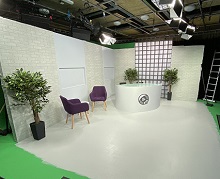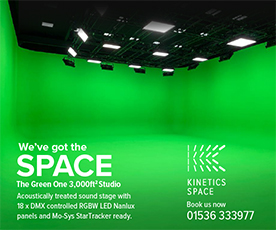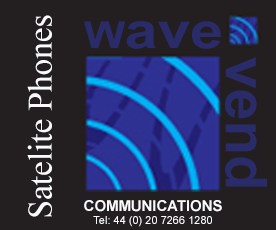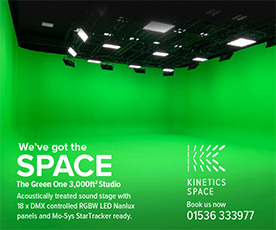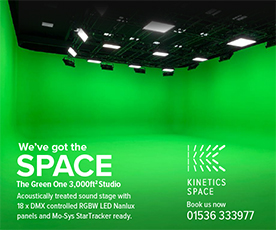Visual clarity: stereo 3D or HDR?
![]() Manufacturers are making another attempt to launch stereo 3D technology, but the need for the constant development of film and TV technology is nothing new, says Phil Rhodes.
Manufacturers are making another attempt to launch stereo 3D technology, but the need for the constant development of film and TV technology is nothing new, says Phil Rhodes.
Huge curved screens of Cinerama were developed in the 1950s as a reaction to television, and the demonstration film This Is Cinerama opens with a small, four-by-three rectangle, emulating the television of the time before opening out to its full-screen, full-colour glory.
The most recent incarnation of stereo 3D is at least the fourth major attempt to popularise it. The fundamental techniques are ultimately the same as those of past decades, and so are many of the problems.
Inconveniences of shooting stereo 3D might have been bearable, especially with gradually-developing camera systems. Even so, the tendency of the system to make audiences uncomfortable and to require extra spending on exhibition equipment made the economic argument more difficult to win.
Are we fit to view 3D?
The technical realities are straightforward. The human visual system has two cues when it comes to gauging distance. Stereo 3D addresses 'binocular disparity', which is the slightly different perspectives of objects when viewed by the left and right eyes. The second cue is 'accommodation', or focus distance, which cannot be controlled by projecting an image onto a flat screen.
The result is an image which appears to be at one distance according to binocular disparity, but which appears to be at another distance focus. There are other problems, particularly those involving objects which appear to be nearer than the screen seemingly cut off in mid-air as they reach the edge of the image.
Brightness and contrast are especially controversial in 3D projection. The need to offer different images to each eye requires different filtration techniques, involving a loss of light both at the projector and in those unpopular glasses.
More efficient systems are becoming available - particularly Christie's 6P Laser Projection technology - but the cost remains high. Finally, of course, 3D massively increases production costs. The technology is set to remain niche for the moment.
A 3D alternative
There is, however, another contender for the position of next big thing. High dynamic range (HDR) refers to the maximum difference between the darkest and brightest areas of the picture.
Higher dynamic range allows for greater contrast, rendering things like the reflection of the sun in a polished metal surface more realistically.
What does the market offer us at the moment?
.jpeg) HDR has been shown perhaps most memorably by Dolby as its Vision technology, developing further the approach used in their excellent PRM-4220 reference display.
HDR has been shown perhaps most memorably by Dolby as its Vision technology, developing further the approach used in their excellent PRM-4220 reference display.
Whereas a conventional display might achieve a brightness of 100 candela per square metre (called 'nits'), Dolby has specified up to 10,000-nit displays. Nothing of that power has been made, although 4,000-nit versions can be positively dazzling when the director of photography and colourist want them to be.
The engineering approach is often locally-dimmed backlighting, where a high-performance but conventional liquid crystal display panel is backlit by a grid of LEDs, allowing the backlight brightness to be controlled in various areas of the image. The backlight control is not as fine as the pixels, so certain picture content can defeat the technique in small areas of the display, but overwhelmingly it works very well and permits impressive dynamic range.
Sony has demonstrated its high-end BVM-X300 display doing much the same thing, which is interesting because the X300 uses OLED technology. While OLED is capable of very high contrast, its absolute maximum brightness has not traditionally been that high. The ability of the X300 to meet the minimum 1000-nit specification to be considered HDR is encouraging for the technology.
The advantages are clear. Current cameras are generally capable of shooting HDR, and there is little or no penalty on set or in the edit other than some extra time required to produce HDR grades. The benefits are extremely visible and easy to promote to the end user.
An HDR-capable display placed in a retail environment among conventional types will very visibly and obviously outperform them. This is already possible and with a keen eye for the necessity of a distribution pipeline, Dolby has already shown consumer televisions, Vizio's Reference Series, with their Vision technology, and material is already available via Netflix and Vudu.
As with many next big things, we can see it coming clearly enough. The question is whether it'll just as quickly go away again. It's easy to be enthusiastic about the way HDR looks, but many factors other than sheer technical accomplishment are always at play.
Also on The Knowledge
HETV Fund to boost skills support for high-end unscripted
The High-end TV (HETV) Skills Council is setting up a new working group dedicated to the needs of specialist workforce skills within high-end unscripted television.
Cameras due to roll in Liverpool on BBC drama
Filming is due to begin around now in Liverpool on This City is Ours, a sweeping new BBC One crime drama from Stephen Butchard and Left Bank Pictures.
Production gets underway on Everyone Else Burns S2
Production is due to get underway in the next week in Manchester on the second series of Everyone Else Burns.
C5 greenlights mystery thriller The Wives
Production is underway on a new C5 thriller, The Wives, starring Jo Joyner, Angela Griffin and Tamzin Outhwaite.
Filming underway on Sky’s Lockerbie drama starring Colin Firth
Production has begun on a major new drama about the 1988 Lockerbie bombing, starring Colin Firth as Dr Jim Swire.
Studios Spotlight – Behind the scenes at Pride Media Centre
The last Studios Spotlight of 2023 shines on Pride Media Centre in Gateshead, a “safe, welcoming space for businesses and organisations from the LGBT+ community and allies, to grow, develop and be creative”.







